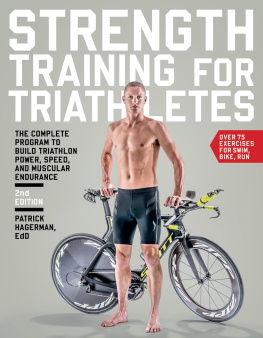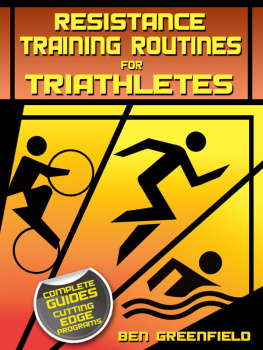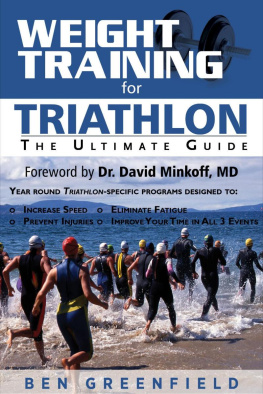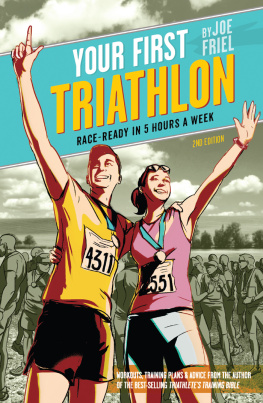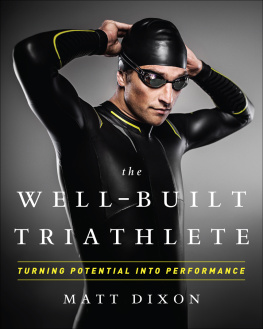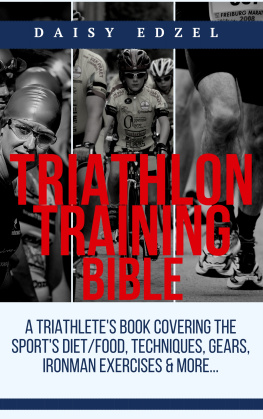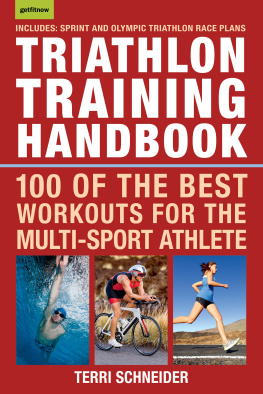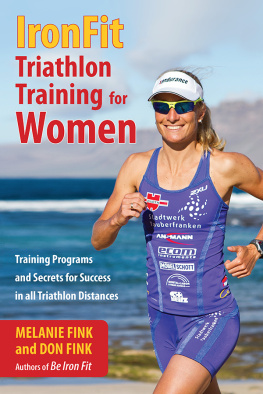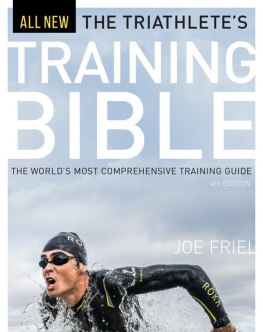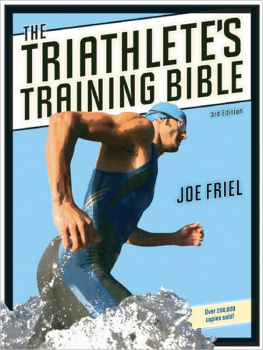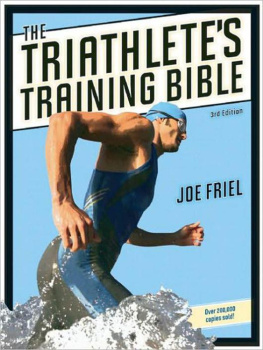
Copyright 2015 by Patrick Hagerman
All rights reserved. Published in the United States of America by VeloPress, a division of Competitor Group, Inc.
Before embarking on any strenuous exercise program, including the training described in this book, everyone, particularly anyone with a known heart or blood-pressure problem, should be examined by a physician.
Ironman is a registered trademark of World Triathlon Corporation.

3002 Sterling Circle, Suite 100
Boulder, Colorado 80301-2338 USA
(303) 440-0601 Fax (303) 444-6788 E-mail
Distributed in the United States and Canada by Ingram Publisher Services
A Cataloging-in-Publication Data record for the printed edition is on file with the Library of Congress.
ISBN 978-1-937715-31-1 (pbk); ISBN 978-1-937716-64-6 (e-book)
For information on purchasing VeloPress books, please call (800) 811-4210, ext. 2138, or visit www.velopress.com.
Cover design by Andy Omel
Cover photograph by Nils Nilsen
Interior design by Vicki Hopewell
Interior photographs by Jeff Nelson
Gym location courtesy of Anytime Fitness, Boulder, Colorado
Composition by Jessica Xavier
v. 3.1
A note to readers: Double-tap on illustrations and tables to enlarge them. After art is selected, you may expand or pinch your fingers to zoom in and out.
CONTENTS
Ever since the early 1960s, sport scientists and coaches have been looking for ways to make athletes bigger, faster, and stronger. While the science behind strength training is continually evolving, the principles of strength training havent changed wildly over the years. The best way to become stronger is really quite simple: Lift heavy stuff. However, when you are using strength training to prepare for a specific sport, it becomes more complex. Every sport places different physical demands on the body, so there isnt one clear method that delivers the results every athlete is looking for. Its particularly challenging to design a strength training program for a triathlete, who is training for three sports.
Pick up any fitness magazine and there will be plenty of training trends, new exercises, and fad programs touted as the latest and greatest way to improve your speed, strength, or endurance. You can even find a fair number of strength training programs that are designed for triathletes. Unfortunately, many of the programs you will come across online, in magazines, or in talking with other athletes are not a good fit for your goals, your body, and your training schedule. To truly produce results, a strength training program must be specific to swim, bike, run while taking into account your individual strengths and weaknesses.
What sets this book apart is the fact that it doesnt play into the trends or fads, and it doesnt give you a one-size-fits-all program. This book will help you design a strength training program that does exactly what you need it to dowhether that be improving your speed, addressing a muscular imbalance, or overcoming a weak area. The science behind this program design has been proven over and over, and it is based on what a triathletes body needs.
This second edition takes the groundwork that was laid in the first edition and builds upon it with the latest research in sport science. You will find more triathlon-specific exercises to keep training interesting, more sample programs to map the countless approaches you can take to strength training, and more options for at-home and travel workouts. Every exercise includes photographs to better illustrate good technique and execution. At the back of the book youll find some useful charts to help with selecting exercises that focus on particular muscle groups and calculating the right weight to use for different goals over the course of your training.
As an athlete, you are always looking for a competitive edge, a training program that will put you on the podium or simply make you faster than you are now. This new edition of Strength Training for Triathletes can do just that.


T riathlon is an endurance sport, plain and simple. So why should you consider strength training a necessary part of a triathlon workout? The short answer is that strength training makes muscles stronger, and stronger muscles can perform longer at higher intensities before they fatigue. To fully understand what is happening during strength training and endurance training you must break down and examine the subtle differences and similarities between the two. This book takes the long route because when you understand how the body works, its much easier to plan training programs that work to your advantage.
Making the Case for Strength Training
If you ask any triathlete what endurance training is, the most common answer has something to do with swimming, cycling, or running. Technically, endurance training is any type of exercise that is rhythmical, maintains an increased heart rate and oxygen consumption, and uses large muscle groups to propel the body. It is also referred to as aerobic training because the body relies on a continuous, increased supply of oxygen during the energy-making processes at the cellular level. This supply of oxygen comes from increased respiration, usually the result of taking deeper breaths and breathing more frequently. In addition to increased respiration, the heart must pump more blood to the muscles to deliver the oxygen. So there is an increase in heart rate and respiration that is maintained throughout exercise: Thats endurance training.

 STRENGTH TRAINING can be any type of training that increases the endurance, size, power, or strength of the specific muscles being used, regardless of what type of exercise is being done.
STRENGTH TRAINING can be any type of training that increases the endurance, size, power, or strength of the specific muscles being used, regardless of what type of exercise is being done.
Ask the same triathlete what strength training is, and the answer usually involves some sort of weight lifting. In the most literal sense, strength training can be any type of training that increases the endurance, size, power, or strength of the specific muscles being used, regardless of what type of exercise is being done or whether someone is actually pumping iron. Strength training is done in short bouts, with rest periods interspersed throughout the workout; is not rhythmical; and involves many different muscle groups, some large and some small. Strength training is considered anaerobic, or without oxygen. Even though you are breathing and your body is delivering oxygen to the muscles, the processes that provide energy for strength training do not rely on oxygen as the aerobic processes do.
Another difference between strength and endurance training is that strength training does not improve the cardiovascular system to any great extent. Each exercise requires a short burst of effort that doesnt require large increases in blood flow from the heart. During endurance training, as the heart rate rises, the heart is doing more work, so the heart muscle must be able to keep up the pace. To do this, the cardiac muscle tissue gets stronger, and the heart becomes more efficient at pumping blood. During strength training, significant, sustained increases in heart rate dont occur, and increases in oxygen delivery to the muscles are not needed, so the heart doesnt have to become stronger or more efficient.
Next page
